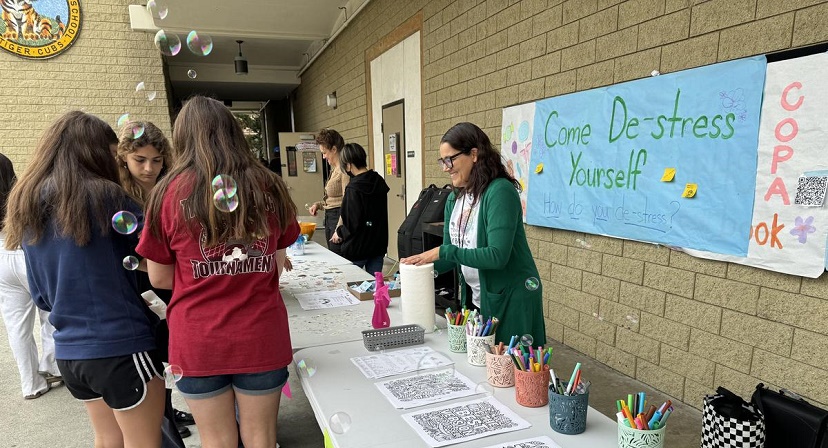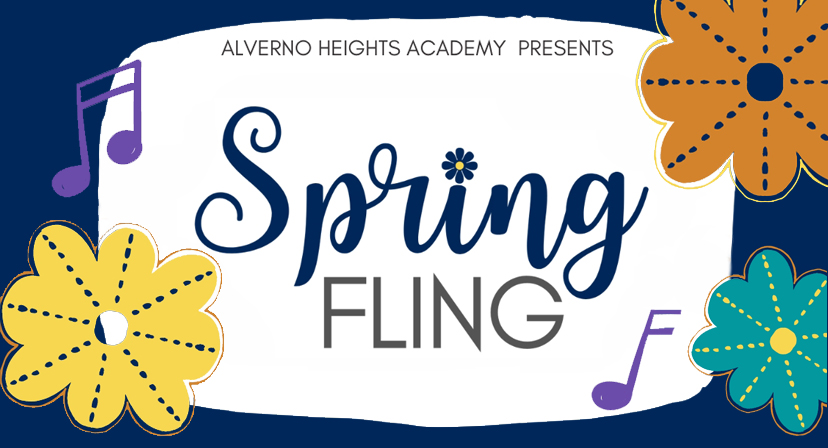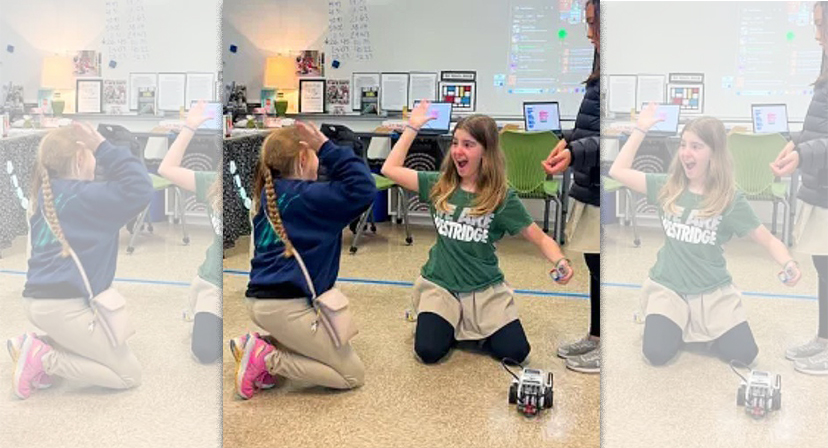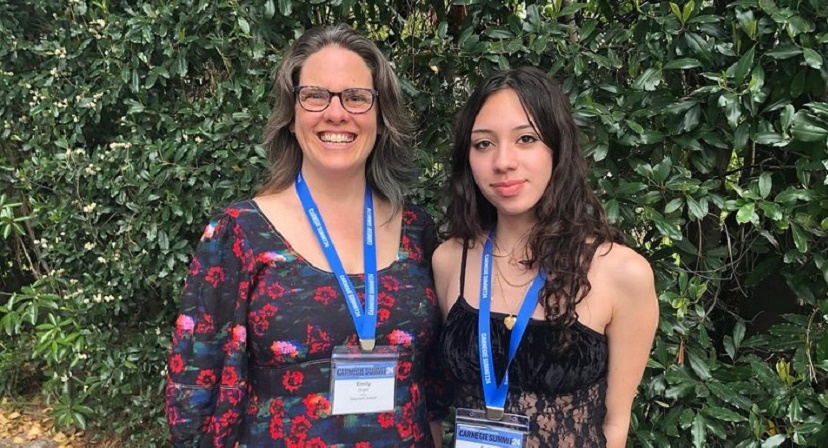Poetry Alive at Clairbourn: Teaching Communication Skills and Confidence
 Individuals with excellent presentation skills are in high demand—especially since public speaking is one of humanity’s greatest fears. So how can a school like Clairbourn help students overcome self-consciousness and learn to speak and present professionally? One way is by bringing in the Poetry Alive program–a week-long event where second through fifth grade students learn a poem by heart and then dramatize it with characters, movement, and special intonation. This kind of training, not only helps to create a love of poetry, but also helps students develop “main idea” comprehension, creative expression, and interpersonal-skills.
Individuals with excellent presentation skills are in high demand—especially since public speaking is one of humanity’s greatest fears. So how can a school like Clairbourn help students overcome self-consciousness and learn to speak and present professionally? One way is by bringing in the Poetry Alive program–a week-long event where second through fifth grade students learn a poem by heart and then dramatize it with characters, movement, and special intonation. This kind of training, not only helps to create a love of poetry, but also helps students develop “main idea” comprehension, creative expression, and interpersonal-skills.
 Throughout the week, poetry professionals, Ian Geary and Brian Knox, visited each classroom for two in-depth training sessions, followed by a dress rehearsal and final performance for parents at a school assembly. Through personal coaching, confidence-building activities, and theatre exercises, students were actually learning to hold an audience in rapt attention as they skillfully projected, gestured, and modulated their vocal tones with each word and idea in the poem.
Throughout the week, poetry professionals, Ian Geary and Brian Knox, visited each classroom for two in-depth training sessions, followed by a dress rehearsal and final performance for parents at a school assembly. Through personal coaching, confidence-building activities, and theatre exercises, students were actually learning to hold an audience in rapt attention as they skillfully projected, gestured, and modulated their vocal tones with each word and idea in the poem.
 To prepare for the program, teachers pre-assigned students into groups and let them choose a kid-friendly poem from the works of Shel Silverstein, Jeff Moss, Jack Prelutsky, and other poets that work in a similar vein. When the professionals from Poetry Alive arrived on campus to lead the training sessions, everyone was ready to get straight to work.
To prepare for the program, teachers pre-assigned students into groups and let them choose a kid-friendly poem from the works of Shel Silverstein, Jeff Moss, Jack Prelutsky, and other poets that work in a similar vein. When the professionals from Poetry Alive arrived on campus to lead the training sessions, everyone was ready to get straight to work.
 Ian and Brian, appropriately wearing T-shirts that said “Metaphors Be With You,” got the students fired up with an introductory assembly filled with lively examples of all that poetry can be when expertly presented. Some of their poems involved calling up student volunteers to participate. After the assembly, the Poetry Alive team visited classrooms to impart lesson one—understanding the parts of the poem.
Ian and Brian, appropriately wearing T-shirts that said “Metaphors Be With You,” got the students fired up with an introductory assembly filled with lively examples of all that poetry can be when expertly presented. Some of their poems involved calling up student volunteers to participate. After the assembly, the Poetry Alive team visited classrooms to impart lesson one—understanding the parts of the poem.
 They advised students to treat the poem like a script where the first thing you do is read it cold, out loud. The next step is to memorize the lines—which goes infinitely faster if done aloud. Then repeat it aloud at least ten times—even 20 times if needed. The point is to free yourself up from the words so you can focus on the performance points.
They advised students to treat the poem like a script where the first thing you do is read it cold, out loud. The next step is to memorize the lines—which goes infinitely faster if done aloud. Then repeat it aloud at least ten times—even 20 times if needed. The point is to free yourself up from the words so you can focus on the performance points.
 The next step in the work is to break down each poem to identify characters, such as people, animals, and even objects. From there, you can clarify the poem’s setting and identify the actions. The last step is to list the feelings and emotions of the different characters. These foundation exercises make the difference in helping students acquire and communicate to an audience their understanding of the poem’s ideas and nuances.
The next step in the work is to break down each poem to identify characters, such as people, animals, and even objects. From there, you can clarify the poem’s setting and identify the actions. The last step is to list the feelings and emotions of the different characters. These foundation exercises make the difference in helping students acquire and communicate to an audience their understanding of the poem’s ideas and nuances.
 Lesson two is all about performing—learning the elements of great delivery and learning to manage the challenges of being on stage. They covered what to do about nervousness, and the answer is to channel this type of energy into performance dynamics like volume, expression, and gesture. Stage fright is not helpful and needs to be managed differently. Those who are prone to lock up and forget things can spend extra time on memorization and practice. This will provide the ingredients of confidence and experience to overcome the stage fright.
Lesson two is all about performing—learning the elements of great delivery and learning to manage the challenges of being on stage. They covered what to do about nervousness, and the answer is to channel this type of energy into performance dynamics like volume, expression, and gesture. Stage fright is not helpful and needs to be managed differently. Those who are prone to lock up and forget things can spend extra time on memorization and practice. This will provide the ingredients of confidence and experience to overcome the stage fright.
 The second lesson continued with the four key elements of a great performance. First is the “Confidence Stance” which is to have one’s feet planted firmly on the floor, shoulder width apart, hips in a straight line, with hands at the sides. Next, is learning to “Face the Audience” which means turning only slightly towards your fellow actors at a diagonal so the performer’s face is always easily seen by the audience.
The second lesson continued with the four key elements of a great performance. First is the “Confidence Stance” which is to have one’s feet planted firmly on the floor, shoulder width apart, hips in a straight line, with hands at the sides. Next, is learning to “Face the Audience” which means turning only slightly towards your fellow actors at a diagonal so the performer’s face is always easily seen by the audience.
 It doesn’t feel realistic, but it keeps everyone involved in the action. The third element is to use one’s body to “Fill the Space.” Stage presence isn’t about the physical size of the actor. It is about the confidence and energy presented. Make every gesture big, bold, and fully extend the limbs! When pointing to the side, imagine pointing out through the wall into the neighboring room. The last element is to “Project the Voice” without screaming. Loud voices are achieved by breathing in extra air, and it’s easier to breathe in extra air when assuming the confidence stance on stage.
It doesn’t feel realistic, but it keeps everyone involved in the action. The third element is to use one’s body to “Fill the Space.” Stage presence isn’t about the physical size of the actor. It is about the confidence and energy presented. Make every gesture big, bold, and fully extend the limbs! When pointing to the side, imagine pointing out through the wall into the neighboring room. The last element is to “Project the Voice” without screaming. Loud voices are achieved by breathing in extra air, and it’s easier to breathe in extra air when assuming the confidence stance on stage.
 Following these performance lessons, students were ready for rehearsals. They first had to rewrite the poem like a stage script and then cast the parts and block the scenes. Through practice, they learned to break the bad habit of presenting poetry with a sing-song delivery. At week’s end, the students were mentally and physically prepared for the big performance in the Multi-Purpose Building, and the event proved to be enormously entertaining and inspiring to all who attended.
Following these performance lessons, students were ready for rehearsals. They first had to rewrite the poem like a stage script and then cast the parts and block the scenes. Through practice, they learned to break the bad habit of presenting poetry with a sing-song delivery. At week’s end, the students were mentally and physically prepared for the big performance in the Multi-Purpose Building, and the event proved to be enormously entertaining and inspiring to all who attended.
 This Poetry Alive program was brought to campus this year thanks to the Price Family Literary Enrichment Endowment Fund. The purpose of the fund is to ensure that literary programs, like Poetry Alive, will continue to flourish at Clairbourn for generations to come. The school warmly thanks the Price family for this generous gift that will have a lasting impact on young lives well into the future.
This Poetry Alive program was brought to campus this year thanks to the Price Family Literary Enrichment Endowment Fund. The purpose of the fund is to ensure that literary programs, like Poetry Alive, will continue to flourish at Clairbourn for generations to come. The school warmly thanks the Price family for this generous gift that will have a lasting impact on young lives well into the future.
To view the Poetry Alive performances at the final assembly, click here.
To see the students working on their poems in the classroom, click here.
Clairbourn School, 8400 Huntington Drive, San Gabriel, (626) 286-3108 or visit www.clairbourn.org.



















